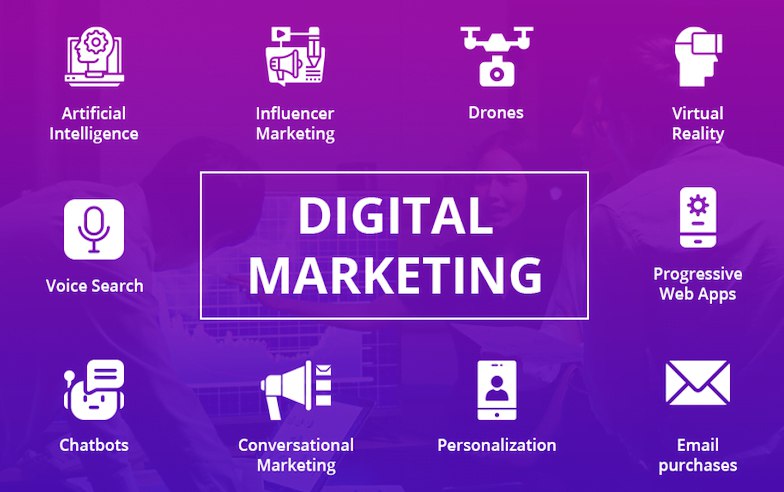
The storytelling pushed with the aid of using facts combines facts and graphs to tell a fascinating story. It additionally gives extra context for the facts to be understood by audiences. The visible show of facts lies can show reader models and connections that they’ve now no longer deducted alone
This means that the graphs can help businesses follow their performance and set their goals as a tool in a large arsenal of small companies.
Species of storytelling data visualization
Visual tools are available for rendering facts and highlight the significance of facts visualization.
Some forms of story-telling facts visualizations include:
- Bar Graphs
- Bubble Charts
- Histograms
- Infographics
- Line Charts
- Maps
- Pie Charts
- Scatter Plots
Every method of visualization serves one purpose. Graphs in bars and charts are perfect for comparisons, at the same time as charts inline display linear relationships. Maps illustrate geographical information, which includes this one on the world languages.
Pie diagrams divide data by categorization, while scatter diagrams show relationships between several variables. Look at the infographics below to get a better understanding of the diagrams and graphs you’ll need to say your data story.
Five benefits of data storytelling
When told through data, what advantages can Do companies expect?
Marketers and designers should ask themselves these questions before embarking on a large-scale design project. It is, however, worthwhile to devote time and energy to a variety of data visualization applications.
- Facilitates further information analysis.
When you consider the types of visualizations described above, you can see how they help you gain a better understanding of data.
A text post or report can accomplish the same goal, but it will require significantly more effort from the reader, increasing the likelihood that they will leave your page in search of more concise information.
An image, on the other hand, takes far less time to transmit the same details to the reader. Engagement and conversion rates improve as a result of this.
- Assists in the resolution of problems
Data stories are short documents that help to resolve problems and enhance productivity. This is because decision-makers don’t have to read large volumes of text or dig through large amounts of data; the graphs do it for them, helping them to solve problems more quickly.
- Participates in internal and external hearings.
Because content marketing is all about commitment, eye-catching visuals are crucial. Visuals, especially well-designed data graphics are more appealing than text blocks. . This is due to the fact that a data story is convincing in and of itself – figures, percentages, relationships, and ties all tempt a reader to put down their work and examine their graph.
- It improves reporting abilities.
Workplace reports are unavoidable. A compelling data tale, such as this simple yet elegant finance infographic the template is the foundation for a memorable and effective review.
- A wide range of applications
A diverse set of uses Graphics may be repurposed for a number of purposes and distribution networks. On social media sites like Twitter, where there is a flood of data, visual attention is needed.
Data will assist you in attracting people’s interest. While scrolling through their feed, viewers are captivated by bite-sized visuals that are easily absorbed and shared. A large graphic has the potential to go viral, increasing the reach and influence of your content.
Data Story on Best Practices
Following a few best practices when it comes to data visualization is important. Without a goal, it’s impossible to make visuals.
You must also understand the subject matter and the needs of your audience in order for your data to tell the story you want it to tell and engage your readers. The following are six best practices for creating customer retention visualizations.
Make visual classifications
To read and interpret your data, you’ll need to create hierarchies. Readers can create contexts and patterns with the help of visual hierarchies in data storytelling.
Since you don’t want to illustrate the graph with a tonne of text, hierarchies are the most powerful way to express background. Here’s how to make the best visual hierarchies and contexts:
- The elements are arranged in a logical order from top to bottom.
- Elements that are grouped
- Colors of various shades
- Visual styles that are diverse
- Font size enlargement
The above methods will allow users to deduce the relationship between data and elements.
Create confidence in visual data
When we put together statistics for studies at Venngage, before starting the design process, we survey hundreds and even thousands of respondents.
Keep your visuals simple.
It takes a long time and effort to collect data. Making visuals that convey as much information as possible is appealing. However, that mindset can detract from the effectiveness of visual data representation and overwhelm your audience.
A badly crafted graphic, like the one below, can give readers a negative perception of your brand and product, resulting in the loss of more potential customers.
Excessive use of text is not advised.
The view does not look good if you need more text to comprehend your data Story. While the graphic must contain some text, the image should not prevail.
The advantages of data-driven storytelling are that you can communicate your information through the visual medium.
Select colors carefully in visualizations
Colors can be used to draw attention to important information in a graphic and to enhance the data Story you’re trying to tell, which is why they’re so important in data visualization storytelling.
That isn’t to say you have to use every color in the palette in your design. Using too few colors, on the other hand, can result in incorrect data connections.
In visuals, emphasize data
You want to capture their attention as quickly as possible, as much as you want them to understand the data as you present it to them visually.
Even the most basic visuals benefit from some highlights to draw the eye in, and it’s a good way to keep your data Story consistent. Increase the font size or icon size to make relevant data stand out with a highlight color.
Businesses can benefit from the value of data storytelling
We looked at how data storytelling can help businesses grow in 2021 in this article. Graphics share perspectives and similarities that viewers may have overlooked, while also being persuasive resources for engaging and converting consumers.











































































